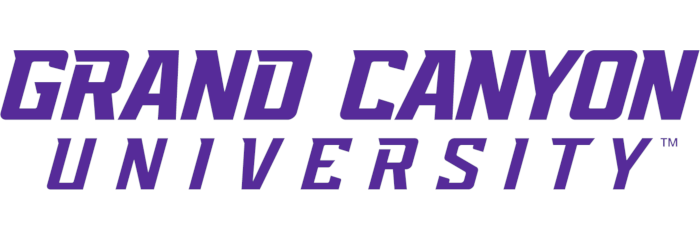Guide to Starting Your Online Education
Equipping Yourself for Success in an Online Degree Program
Having the right technology will help you succeed in online classes. These are some of the most basic equipment items you may need to acquire before the startup of your online learning program:
-
Access to an up-to-date computer (preferably made within the last three years) – it’s best to have a laptop or desktop, as most tablets won’t be adequate for online programs
-
Webcam/microphone – Most newer laptops come equipped with both
-
High-speed internet
-
Headphones – These are optional but make it easier to study and attend lectures if you can’t find a quiet space
-
Built-in or external speakers
Laptops that fulfill these requirements can be purchased for about $250-$300. Your school may have other equipment requirements, including memory and processor requirements for laptops, so check your school’s website for specific technology recommendations.
If you don't have access to this type of technology, there are several alternative options. Public libraries usually provide access to computers and high-speed internet, although this method may not be sustainable long-term.
Many organizations offer free or low-cost laptops, desktops, and discounted internet access for low-income families. Here are a few resources for students who demonstrate financial need:
Some schools offer free or discounted laptops or lease equipment to learners as well. Check your institution’s financial aid hub or a financial aid advisor for more information.
If you have a computer with wireless capability but no internet connection in your home, there are still many ways of getting online. For example, there are free and low-fee internet networks offered through local businesses, such as coffee shops and bookstores, that would be great for accessing accredited online learning programs. Your public library also likely offers free Wi-Fi. There may be low-cost internet opportunities in your area as well. Ask your local internet providers if there are discounts for low-income families or students.
The Online Learning Structure
Online learning programs differ in how they work. Courses are typically delivered through a learning management system (LMS), such as Canvas or Blackboard, which allows students to review course material and complete assignments. Most online degree courses begin by presenting live or recorded lectures, written text, and then online assignments, assessments, quizzes, and tests.
Many classes will have a discussion component. In asynchronous classes, this discussion will consist of a message board, with students posting their thoughts and responding to others over several days. In synchronous classes, discussions will take place using a designated chat room, video chat, or instant messaging.
Students enrolled in online classes that require lab experiments, such as biology and chemistry, may wonder how labs work in the online environment. Many schools create lab kits containing all the necessary equipment and step-by-step instructions that are shipped to each student's residence. Alternatively, some instructors develop experiments that can be performed at home using common household items. More advanced experiments are often conducted virtually, enabling students to obtain the same knowledge without being on campus.
Types of Online Classes
Not all online courses have the same delivery method or time commitment. Depending on your course type, you can expect a more or less flexible online class experience. The major types of online classes include the following:
Synchronous Classes
These courses are the most similar to traditional, interactive, on-campus classes. Students are required to be logged in at particular times to watch real-time lectures, engage with instructors and peers, and participate in discussions or training. For example, students enrolled in the University of Alabama at Birmingham's online Master of Engineering degree are required to attend one mandatory live class session per week. Some schools leave the option to hold synchronous online classes up to professors.
Asynchronous Classes
Here you’ll still be expected to follow a traditional course schedule, but you’ll have a window of time to view course content and complete assignments, rather than a set time you need to be logged in. Students are not required to virtually meet together at a set time, but each student is generally required to communicate with a number of students each week. Many established fully online programs use this style as it allows students to have a more flexible schedule, one of the main attractions of virtual learning.
Self-Paced
Some asynchronous classes allow students to go at their own pace, and don’t have strict due dates or deadlines. While students may have to complete a course in a set amount of time, they can finish assignments and review course materials when it is convenient. Asynchronous, self-paced courses work well for competency-based programs, where students can advance straight to the final test of a course if their earlier assessments demonstrate an in-depth level of knowledge in a subject. Most of Western Governors University’s programs are competency-based, where students can complete modules based on their knowledge and skill level.
Hybrid or Blended
Hybrid classes, also known as blended learning, are often used in programs that require significant hands-on skills, such as nursing or social work degrees. Although each school’s hybrid courses may look different, they all incorporate both face-to-face and online learning. Students often learn didactic information online and attend a limited number of classes in person. These may take the form of regular courses or on-site practicums to master hands-on skills.
Types of Distance Learning
There are several forms of distance learning, and many institutions use a combination of methods to teach their students. However, there are four common distance learning techniques: open schedule, blended learning, computer-based learning, and fixed time e-learning.
Fixed Time E-Learning
The most common form of distance learning is a program that sets a predetermined schedule that can be kept from any location. This could mean that students can work from home, school, or the office, as long as they log on to the online learning site at a designated time. These programs often include a live online forum.
Open Schedule
An open schedule can be taken anywhere, giving students the most freedom possible. In this plan, students are given a set of deadlines that they must meet within a certain amount of time, but they can work any time and place to meet the course requirements. This program is ideal for independent workers and people who don't struggle with procrastination.
Blended Learning
The second most common strategy used in distance learning is one that offers an open schedule but requires students to communicate in an established location. This could mean that students can complete assignments on their own time, but they're required to meet in a classroom or computer chat room to touch base.
Selecting an Online School: Things to Keep in Mind
Choosing the right online college and the right career path can be extremely difficult. With hundreds of institutions and programs currently operating online, it's easy to get bogged down by the seemingly endless amount of research you must conduct to make an informed decision. This may be one of the most important decisions you make in your lifetime, but information is available to help guide your way when applying to college.
Online Program Offerings
The number of degrees and subjects an online school offers can vary greatly. Some schools may offer only one fully online degree, while other schools will offer more than 100 different online education degree options. Whether or not a school offers your desired degree will likely be the most important attribute of a school to you, so it's worth looking into program offerings early on in your decision-making process.
If you're not completely certain what you want to study and would like time to take classes in multiple program areas, make sure you find a school that offers multiple degrees that interest you. This will prevent you from the lengthy and frustrating process of having to transfer schools.
One thing to consider when evaluating programs is whether there is an in-person component and where that component needs to be completed. For many professions, such as teaching or social work, a hands-on practicum may be required for graduation or licensure. Graduates with some kind of professional experience or credentials, such as an internship or certification, will have an advantage when seeking employment post-graduation.
Accreditation
Accreditation is an important thing to consider when deciding which school to attend. Accreditation is a mark of excellence that tells learners, employers, and other schools that you have received a quality education. Enrollment in an accredited institution is required to be eligible for federal financial aid, and it may be required to transfer credits to another institution, for acceptance into graduate school, or to qualify for licensure or certification for some occupations.
Institutional accreditation indicates that an entire school — its programs, faculty, facilities, and operations — have been approved by an authorized agency. To confirm that the school you plan to attend has been accredited by a recognized agency, check the databases published by the U.S. Department of Higher Education and the Council for Higher Education Accreditation.
Individual programs may also be accredited, usually by a professional organization related to the field of study. You can use the same USDE and CHEA websites to determine whether the programs you're considering have earned programmatic accreditation.
Credits
As is true of traditional programs, some online programs are structured on the semester system while others are structured on the quarter system. In the semester system, the school year is divided into three semesters — fall, spring, and summer — and classes usually run for 15 weeks. In the quarter system, the school year is divided into four quarters — fall, winter, spring, and summer — and classes are condensed into shorter 10-week periods.
In the semester system, classes are typically worth three credits. Although quarter classes are also worth three credits, students enrolled in schools operating on the quarter system are required to earn far more total credits to graduate. For example, a bachelor's degree at a semester-system school typically requires the completion of 120 credits, while the same degree at a quarter-system school often requires 180 credits.
A few fully online schools operate on an entirely different, often accelerated, basis. In these programs, classes may run five to seven weeks. Students typically take just one or possibly two intensive courses at a time. Rather than requiring a specific number of credits, these programs often set requirements in terms of courses completed.
Despite these differences, students who want to transfer from one college to another can usually transfer all or at least most of their credits or courses, even if the schools operate on different systems. Admissions advisors will calculate the appropriate number of credits and inform you about what's required. Most schools, however, will only accept credits from another institution that has the same type of accreditation.
Nontraditional students who have spent time in the workforce or in military service — which tend to be the target audience for online programs — may be able to request a prior learning assessment (PLA) before enrolling in an online program. Through the PLA process, admissions officers may determine that a student has acquired an appropriate level of knowledge and skill in one or more specific areas and is therefore not required to take required courses in the program. As a result, the student is granted credit for those courses and may move ahead to the remaining courses in the program.
Often, colleges will only accept credits from schools or programs that have been accredited by the same type of accrediting agency.
Reputation
The reputation of the school that you attend may affect how your degree is perceived by employers and other institutions. This is especially true for online programs, which can vary in quality. Attending a program that is widely respected increases the likelihood that you will be satisfied with your education and feel prepared to enter the field. Getting your degree will take a lot of time, effort, and money, so it's important to understand the reputation of the school that will be giving you your degree when you graduate.
One thing that may help you determine the value of a particular program is our Salary Score ranking system. To calculate a school or program's salary score, we compare alumni earnings by major in the first year out of college to similar programs at colleges across the country. Salary scores above 50 indicate that alumni have higher-than-average median salaries. You can find salary scores on many of our ranking and school pages.
Tuition and Financial Aid
The cost of college is highly variable, and a higher cost does not necessarily mean better education. No matter how you're planning to finance your college education, it's likely you do not have unlimited resources to spend. Look closely at the cost of each school and consider how it compares to other colleges. We've listed the annual tuition pricing for each school, as reported by the National Center for Education Statistics, in our school lists.
As an online student, you will not have to pay for room and board or for transportation to and from school. However, you will need to pay for books, supplies, and other fees, which the College Board estimates to be at least $1,240 per year.
If you are planning to take advantage of federal financial aid, whether in the form of grants, work-study programs, or loans, it's important to make sure the school you attend is eligible to participate in federal financial aid programs. Schools often offer a variety of financial aid and support services, including institutional scholarships and free laptops for students. Check school websites for their tuition and financial aid hub to compare what financial options are available.
For more information about financial aid and other ways to fund your education, check out our Financial Aid section.
Student Services
Traditional campus-based colleges are known for a vast array of student services, including tutoring, libraries, and career services. Many colleges with online programs offer these services to online students as well. These services may enhance the college experience and the success a student sees after graduation. The following are some of the resources you may want to investigate before selecting an online degree program.
Career services
Many online programs provide job-hunting help for students and comprehensive career services for alumni. Career centers often provide help with resume writing, interview preparation, career planning, and networking opportunities. They occasionally partner with employers as well to help students enter their chosen field.
Online tutoring and help centers
Students struggling academically may need to make use of online one-on-one tutoring sessions and math or writing centers to keep up with their course load and maintain a good GPA. These are critical resources for students, and most schools make this type of support available.
Student success center
Online students who are new to distance learning may struggle with things like time management, creating and sticking to a schedule, or maintaining a healthy work-life balance. Student success centers often have resources ranging from online articles or webinars to counselors who will create individualized plans to help students overcome these challenges.
Advisors
Many schools assign students to academic advisors who help them stay on track, and some schools also help students find mentors or coaches. Getting advice from experienced professionals and alumni can help students develop a pace that works for their lifestyle and around their other commitments while ensuring they finish their program in a certain period of time. These advisors may also recommend the best courses to take.
Wellness services
If online schools offer wellness services, it usually includes mental health resources. While some programs simply offer a hub for articles and blog posts on self-care, some have robust programs that include crisis support, clinical counseling, and even legal consultations.
Experiential learning coordination
Some majors, especially those related to health care, require students to engage in on-site, supervised learning in real-world settings. For example, nursing and social work students may be required to complete a certain number of hours of supervised work in actual health care facilities as part of their required coursework. Many other majors require internships. Some online programs have coordinators that help online students arrange for these learning experiences, while other programs expect students to find their own opportunities. It may be helpful to know what's expected before you sign up for a program.
Is Online College Right for You?
To determine whether online college is right for you, you may want to examine a few of the general pros and cons of virtual education. On the one hand, considering online options gives you far more programs to choose from without having to relocate. Online courses also typically allow for far more flexibility in your schedule. On the other hand, virtual courses are less structured and require self-discipline and time management. As an online student, you may also have to put more effort into networking with classmates and instructors.
Ultimately, only you can determine whether earning an online degree will give you the college learning experience you want, fit with your learning style and preferences, and allow you to achieve your personal and career goals.




